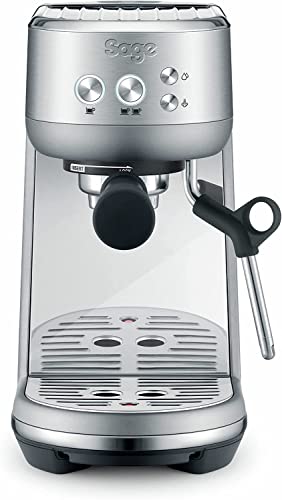Coffee and Espresso Machines

Espresso machines use pressure to push water through finely ground and tamped coffee beans. They make a rich and tasty brew.
Good Housekeeping Institute experts recommend models that brew at 9 bars or less to ensure the best extraction. Beware of manufacturers that claim to use higher pressure than is necessary.
Types
The espresso maker, also known as a espresso and coffee maker, produces the concentrated, higher-quality coffee of your favorite drinks at an average of 9 bars of pressure. They come with a range of features, such as the control of temperature and brew strength with programmable brewing as well as multiple sizes of drinks. Some machines may have steam wands with either manual or automatic settings for creating texturized milk for the latte art. They are available in three primary types of espresso machines which include semi-automatic and automatic and super-automatic models. Each espresso machine has its own particular level and kind of automation.
The most popular espresso machine for specialty coffee shops is semi-automatic models. Semi-automatic espresso machines permit baristas to control the brewing process, however they aren't as user-friendly as fully automatic or automated machines. To get the best espresso shot, you must grind the beans, fill the portafilter, tamp it down, then adjust the time of extraction.
Automated machines have built-in mills that measure and tamp your grounds. They automatically disperse the proper amount of water to extract the espresso, and often come with a programmable drink size function. They were the most frequent espresso machine in our lab tests, and they provide a good combination of consistency and human control.
Functions
You'll need a reservoir hold the water you need for making coffee, whether you opt for a steam-driven machine or a pump-driven machine. There's also a heating element that heats up the cold water in order to create the powerful pressure required to extract coffee from ground.
When the brew button is pressed and the valve for water inlet is sealed so that only hot water with intense pressure can flow through the portafilter, and then into the ground coffee. It takes around 25 seconds for the water to become espresso.
The insulated tubing referred to as the hot-water tubing runs from the reservoir to the spout at the top of your machine. The resistance heating element is responsible for heating the water as the water passes through the aluminum tube and warming plate.
Once the spout is turned on, you'll place your cup in the spout in order to capture the espresso as it flows through the portafilter and into your cup. The coffee maker also has the steam wand which you can use to heat and froth milk for coffee-based drinks such as cappuccino and Latte.
Automated machines take the guesswork out of making coffee. professional espresso maker are operated by a single button that can be programmed to grind and measure beans for you and to crush them down. They usually perform the best overall in our Lab tests because they are simple to operate and don't require a lot of users' skills.
Materials
In an espresso machine, you'll find a vast array of copper tubes and boilers made of stainless steel. There's also intelligent firmware. They might appear complicated but in the end, they do just one simple thing: force hot water through finely ground coffee.
When buying an espresso machine take into consideration the size and space requirements, as in addition to drink options, energy-saving options, and brewing accuracy. Also, look for a steam knob which will activate the steam wand, which is used for frothing milk and creating Latte art. The front of the machine includes an indicator of pressure that will provide the operating pressure for the boiler and pump. It is recommended to look for a coffee maker with two needles in order to determine the minimum and maximum pressure.
If you're looking to make more than espresso, choose a machine that offers different sizes of brews, including the ristretto. There are models that have an hopper that can be removed for easy, hands-free frothing as well as the ability to effortlessly switch between various types of milk. If you have hard water, choose one with an integrated water softener to prevent mineral buildup and keep your espresso tasting fresh.
Some manufacturers use a PID (proportional integral, integral, digital) thermostat to keep a certain temperature range for espresso making. This feature allows for the same high-quality, consistent cup of espresso every time. This feature can also help reduce cost of energy since the machine only operates when needed.
Maintenance
As espresso machines and coffee makers become more accessible for home use, regular maintenance of the equipment becomes even more crucial. Having the most efficient equipment can make all kinds of difference in your cup of coffee, however that's only true if your machine is operating properly.
Regular maintenance and cleaning must include everything from cleaning the steam wand, group head and water filter to decaling and changing the water filter regularly. If you make between two and five coffees each day, it is recommended that you clean the main parts of your machine once a week. Some parts of the machine will require cleaning every two to three weeks, like the water tank and the grinder.
Additionally, it is recommended to backflush your machine on a weekly basis. This procedure involves locking the portafilter into place and running the brew cycle several times. This allows you to get rid of any coffee grounds or oils that are left behind. You can also clean the portafilter using the brush and cleaner designed specifically for espresso machines.
Maintaining your coffee machine and espresso correctly can help it last longer. Many professional espresso machines in cafes and offices are expensive, so it is essential to ensure that your machine is in good working order to ensure it lasts as long as possible.
